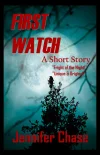When Richard Kuklinski was asked how he felt about killing people in an in-depth interview. He only had this to say.
“I don’t. It doesn’t bother me. It doesn’t bother me at all…”
In one interview, he explained his killing code of ethics.
“I would never kill a child and most likely wouldn’t kill a woman.”
When you think of serial killers you don’t immediately think of confessions from a mafia hitman. However, they are serial killers and each of them has a story to tell that begins to sound quite familiar.
Richard Kuklinski “The Iceman” grew up in the projects of New Jersey during the 1930s and 1940s. His parents were abusive and would beat Richard and his siblings on a regular basis. Rage began to build in him by the age of 10. He began to act out by killing and torturing animals, and finally by the age of 18 he committed his first murder. By the time he was in his early twenties, he had built a reputation as an explosive street hustler that would beat or kill anyone who offended him. That was when his association with Roy DeMeo, a member of the Gambino crime family, was established. Ironically years later, Kuklinski claimed that he had been responsible for DeMeo’s murder.
Over a 30-year period according to Kuklinski, he killed numerous people in various ways, by shooting, strangulation, knife, or poison. His favorite means of killing was using cyanide because it killed the victim quickly and was difficult to detect through toxicology. He went on to explain matter of fact without emotion that his favorite method of disposing a body was in a 55-gallon oil drum.
Kuklinski easily hid behind a mask of normalcy as he married, had two daughters, and posed as a successful businessman. His family and neighbors never knew of his murderous activities. It was estimated that he killed between 100 and 130 people. However, these numbers were never proven.
He earned the nickname as “The Iceman” because of his experiments of disguising the time of death of his victims by freezing their corpses in a freezer and then disposing of them at a later time. However, this was going to be his downfall when his method was discovered because he didn’t let one of his victims thaw before disposing the body. The coroner found pieces of ice in the victim’s heart.
Kuklinski died of natural causes on March 5, 2006 at the age of 70.
What can we learn from Kuklinski?
I strongly feel that there is ALWAYS something to learn from these killers and not just the usual laundry list of serial killer characteristics, such as severely abused as a child, coming from a broken home, unable to control rage, animal mutilator, above average intelligence, and lack of empathy to just name a few.
Strip away the “usual” aspects of this type of criminal and dig deep into the understanding of what makes them tick. They generally love to give a wealth of information to a captive audience and from there we can then begin to see what’s really underneath that they don’t want the general public to see, but they can’t seem to help themselves once they are in the spotlight. It could be the way they answer or not answer a question, how they relate to the murders, or the consistency of their stories. There is always something to be learned, we just need to pay close attention and not take anything for granted when it comes to these serial killers. Nothing is too trivial.
Kuklinksi was calculating and intelligent with his work, especially as he devised ways to throw off authorities with freezing his victims. He balanced a double life with a family. His younger brother (Joseph) was also a criminal and was convicted of raping and murdering a 12-year-old girl. What connections, traits, and similarities do these brothers share? And why?
From the surface, it may seem like there are more questions than answers. The making of a serial killer is a sadistic recipe of psychological, environmental, and behavioral components that drive an individual to kill. The lack of empathy and impulse control is at the core, but that aspect will ultimately be their downfall. It’s only a matter of time. In essence, they are like a ticking time bomb. There are many insights to answers that serial killers have confessed to authorities that we have most likely have missed. By studying all of these types of individuals, including all violent offenders, we will then be able to begin to piece together the mind of a serial killer.




































This Richard Kulinski is very interesting. Personally I believe he was a serial killer but not a mob hit man. I think he was al;so a pathological liar. I’ve read many many books about mobsters and mobsters who were informants for the FBI. So here’s the problem, in not one book or in one sentence is Richard Kulinski’s name ever mentioned. I read the Roy Demeo book. Every killer associated with Roy DeMeo was named but not this guy. He was a killer but he was also a wannabe mobster. He was no mobster hitman. It was all in his dreams.
LikeLike
Maybe he was never mentioned so his murders wouldn’t be tied to anyone, perhaps he was their “secret weapon” lol who knows
LikeLike
Pingback: Readers Have Spoken Loud and Clear – Top Blog Posts of 2012 | Author Jennifer Chase
Pingback: Top 10 Favorite Blog Posts from Readers in 2013 | Author Jennifer Chase